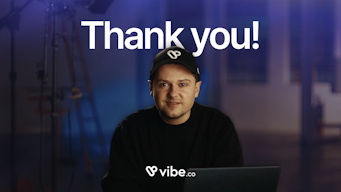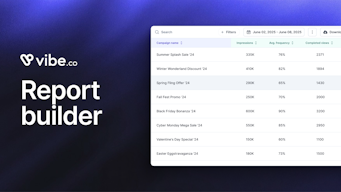AVOD, SVOD, BVOD…WTF?
So you’ve decided to advertise on CTV. Fantastic! Now who scrambled up the alphabet and threw it back up all over the channel catalog? “AVOD, SVOD, FAST,” wtf? Listen, ad tech is willing to give up a lot to foster stronger user trust and transparency but by golly you can’t take away our acronyms! Never fear, here’s your secret decoder wheel. 🤓
- AVOD (ad-supported video on demand): A more recent offshoot of the original paid streaming model made popular by Netflix over a decade ago, AVOD refers to channels and networks that monetize their content through paid ads rather than subscription fees.Audiences can therefore enjoy free (or lower priced) content provided they are willing to sit through a few ads. This model has become increasingly successful, surprising some industry veterans who believed the value of streamed content resided in its “premium,” ad free model.
- BVOD (broadcast video on demand): You may have noticed some familiar names popping up on your CTV feed lately - throwbacks from broadcast television days like CBS or NBC. Those are what we call BVOD streaming services - ad-supported streaming content that comes from traditional broadcasters like NBCUniversal, for example, which now offers free versions of some NBC and Bravo shows on its Peacock streaming service.
- FAST (free ad-supported television): This model is similar to AVOD but exclusively delivers free content and relates to platforms which offer a combination of linear and on-demand programming. It is the fastest growing streaming content type this year! Major players in this category include Pluto, Samsung TV Plus, and The Roku Channel.
- SVOD (subscription video on demand): SVOD streaming services are probably what first comes to mind when you think of CTV. They deliver premium content for a fee with, with no ads. The most popular services in that category include Netflix, Disney+, HBOMax, and Amazon Prime Video. Some of these providers have recently changed their model, however, with Disney+ and Netflix offering tiered subscriptions that now include some advertising as soon as this Fall.
- HVOD (hybrid video on demand): A term just recently coined by Sarah Lewis, global director of CTV at ShowHeroes Group in an AdExchanger interview with Allison Schiff, HVOD may not be an industry-vetted term yet, but it reflects deep shifts that have taken over the streaming landscape since the beginning of the year.
Long held beliefs about what constitutes “premium” content and what users are actually paying for in their SVOD subscriptions are evolving as a rapidly growing segment of CTV users move from expensive ad-free platforms to more flexible ad-supported models like Hulu or Pluto.
The answer? HVOD: services that offer ad-free content at a certain subscription tier, ad-supported content at a lower tier, and maybe eventually a free ad-supported tier. “I think that’s the future,” Lewis said. “It’s not necessarily an either/or, it’s adapting to the individual’s needs and offering options. If you don’t want to watch ads on Netflix, you don’t have to, you can stick with your SVOD subscription. But there will be that tier in order to appeal to people who aren’t looking to spend.”
Lucky for you, if this all still feels like gibberish, Vibe.co works with every one of these streaming service models - as long as they allow ads, obvs - and the Vibe.co platform provides you with daily estimated reach numbers for every one of our 500+ channels, so you can’t mess up.


